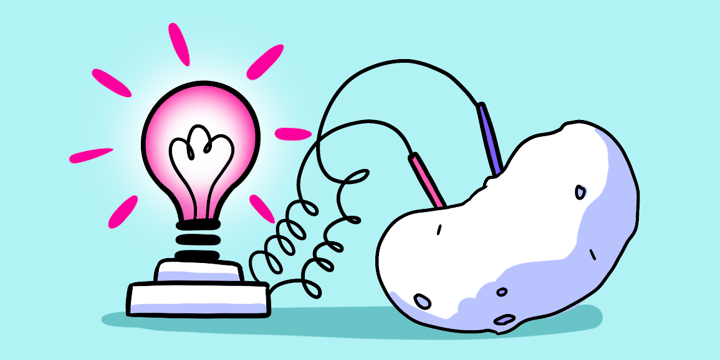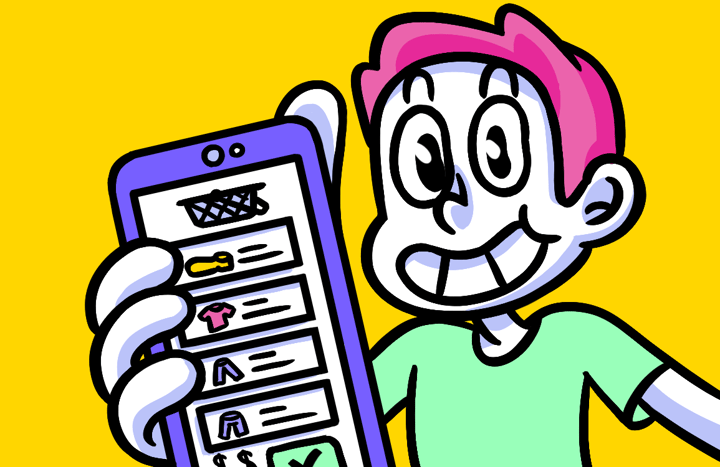Product Discovery Process: Build What Customers Need
Whether you’re a seasoned product manager or just stepping into the world of product development, understanding how to nail the discovery phase is key to creating successful products. In this comprehensive guide, we’ll explore everything from defining product discovery process to overcoming common challenges.
🔩 The Nuts and Bolts:
- The Product Discovery Process is the Foundation of Development.
A thorough discovery phase ensures products meet customer needs, reducing risks and increasing success rates in the market. - Understanding Customer Needs is Central to Discovery.
Through interviews, surveys, and empathy-building exercises, you can gain insights into your customers’ pain points and tailor solutions to meet their needs effectively. - Market Validation Enhances Competitive Positioning.
Analyzing competitors and market trends helps identify opportunities and gaps, ensuring your product offers unique value in a crowded marketplace. - Prototyping and User Testing Mitigate Development Risks.
Early prototypes and user testing uncover usability issues and validate assumptions, enabling iteration and refinement before large-scale investment. - Collaboration and Communication Drive Success.
Regular updates and clear communication with stakeholders foster collaboration, ensuring alignment and buy-in throughout the discovery process. - Effective Tools and Techniques Enhance Discovery.
Utilize platforms like SurveyMonkey for customer insights and Figma for prototyping to streamline discovery tasks and improve outcomes. - Embracing Uncertainty Encourages Innovation.
Viewing challenges as opportunities for learning and iteration fosters creative solutions and a resilient, adaptable product development team.
Understanding the Product Discovery Process
Before we jump into the nitty-gritty of the steps, it’s crucial to get a solid understanding of what the product discovery process actually is. This phase serves as the foundation for everything that follows in product development. Without a well-thought-out discovery process, you could easily miss the mark on what your customers truly need.
Defining Product Discovery
Product discovery is the process of identifying what to build, for whom, and why it matters. It’s about gaining insights into customer problems and validating potential solutions before spending time and resources on product development.
Think of it as the detective work of the product world. You gather clues, speak to stakeholders, and analyze the market to create a product that not only meets business goals but also resonates with your audience. This phase often involves various methodologies, including user interviews, surveys, and competitive analysis, which help you form a clearer picture of the landscape. By synthesizing this information, product teams can prioritize features and functionalities that will deliver maximum value to users.
Importance of Product Discovery in Business Strategy
Why is product discovery so important? Well, consider this: launching a product without validating its concept is like throwing a dart in the dark. Product discovery helps align your product with market needs, reduces risks, and creates a roadmap for success.
By engaging in thorough discovery processes, businesses can increase their chances of success while minimizing wasted resources. After all, failure is often the result of jumping into development without sufficient research and validation. Moreover, a well-executed discovery phase can foster a culture of innovation within the organization, encouraging teams to think creatively and collaboratively about solving user problems. This not only leads to better products but also enhances team morale and engagement, as everyone feels a part of the solution-building process.
Build something your buyers *truly* want
Subscribe to Closing the Gap—a newsletter to help makers and doers get closer to customers. Learn more.
We believe in protecting your data. Here’s our Privacy Policy.
Steps to Master the Product Discovery Process
Ready to jump into the actionable steps of mastering product discovery? Here’s a roadmap that can guide you along the way.
Identifying Customer Needs
The first step is all about your customers. Who are they? What problems are they facing? To get answers, consider various methods such as interviews, surveys, or even social media polls.
Empathy is crucial here. Try to put yourself in the customers’ shoes and understand their pain points. This understanding will guide you in developing solutions that truly resonate with them. Additionally, consider segmenting your customer base to identify specific needs across different demographics. Tailoring your approach to various groups can yield deeper insights and lead to more targeted solutions that cater to distinct user experiences.
Conducting Market Research
Once you have a grasp on your customer’s needs, it’s time to delve into the market landscape. What are your competitors doing? What gaps exist in the market? Market research helps you identify opportunities and threats.
Use tools like SWOT analysis to evaluate strengths, weaknesses, opportunities, and threats. This strategic insight will prove invaluable when shaping your product offering. Furthermore, don’t overlook the importance of trend analysis. Keeping an eye on emerging technologies and shifting consumer behaviors can provide you with foresight into where the market is headed, allowing you to position your product advantageously before others catch on.
Ideation and Concept Development
Now comes the fun part: brainstorming! Gather your team for a creative session focused on ideation. Encourage out-of-the-box thinking and aim to develop concepts based on the insights you’ve gathered from your customers and market research.
Remember, there’s no bad idea in brainstorming—every thought can lead to refinement or inspiration for the next big thing! To enhance this process, consider using techniques like mind mapping or the SCAMPER method, which encourages you to Substitute, Combine, Adapt, Modify, Put to another use, Eliminate, and Reverse ideas. These structured approaches can help unlock innovative solutions and push the boundaries of conventional thinking.
Prototyping and Testing
After narrowing down your ideas, it’s time to create a prototype. This doesn’t have to be a fully functional version of your product; it can be something as simple as a wireframe or a mock-up. The goal is to visualize your concept.
Once the prototype is ready, it’s crucial to test it with real users. Gather feedback, observe interactions, and refine the design based on user experiences. Testing helps you uncover issues and validate your assumptions before committing to full-scale development. Moreover, consider implementing A/B testing during this phase to compare different versions of your prototype. This data-driven approach can provide insights into user preferences and behaviors, ultimately guiding you toward a more successful final product.
Product Discovery Process
Overcoming Challenges in the Product Discovery Process
Although the product discovery process can be exciting, it’s not without its challenges. Let’s tackle some common hurdles you might face.
Dealing with Uncertainty and Risk
Product discovery is often fraught with uncertainty. You’ll be making decisions based on incomplete data or assumptions. Acknowledge this uncertainty and leverage it to create hypotheses that you can test.
Take calculated risks and be ready to pivot when needed. Remember, flexibility is key to adapting and refining your product concept. Embracing a mindset that views failure as a learning opportunity can significantly enhance your team’s resilience. By conducting experiments and gathering user feedback early, you can identify what works and what doesn’t, allowing you to iterate quickly and efficiently. This iterative approach not only mitigates risk but also fosters innovation, as it encourages creative solutions to emerge from the data you collect.
Managing Stakeholder Expectations
With many stakeholders involved, differing opinions on direction can create conflict. It’s essential to communicate openly and set clear expectations. Regularly update stakeholders on progress and encourage their input during the discovery process.
Engaging stakeholders can foster collaboration and buy-in, ultimately leading to a stronger product outcome. Consider establishing a shared vision or a project charter that outlines the objectives, timelines, and roles of each stakeholder. This document can serve as a reference point to align everyone’s expectations and reduce misunderstandings. Additionally, hosting regular check-ins or workshops can create a collaborative environment where stakeholders feel valued and are more likely to contribute constructively to the process.
Ensuring Effective Communication
Last but not least, effective communication is vital for a successful product discovery process. Ensure that everyone—from your team to stakeholders—understands the goals and status of the project.
Use tools like collaboration platforms or project management software to keep lines of communication open, and encourage feedback along the way. Establishing a clear communication protocol can help streamline interactions and ensure that important information is disseminated promptly. Consider utilizing visual aids such as roadmaps or progress charts to provide a snapshot of where the project stands. This not only keeps everyone informed but also helps to visualize the journey, making it easier for team members to stay engaged and motivated throughout the discovery phase.
Tools and Techniques for Effective Product Discovery
To wrap up our comprehensive guide, let’s take a look at some handy tools and techniques that can enhance your product discovery process.
Customer Interviews and Surveys
Engaging directly with customers is key to understanding their needs. Conduct interviews or surveys to gather valuable insights. Platforms like SurveyMonkey or Typeform can help streamline this process, making it easier to reach your audience.
Be sure to analyze the data collected; look for trends that can inform your product decisions. Additionally, consider using open-ended questions to capture qualitative data that can provide deeper context to the quantitative results. This approach not only helps in identifying pain points but also uncovers opportunities for innovation that may not be immediately apparent through numerical data alone.
Competitive Analysis Tools
Utilize competitive analysis tools like SEMrush or SimilarWeb to gain insights into competitor strategies. Understanding their strengths and weaknesses can help you carve out your own niche in the market.
These tools can provide data on traffic, marketing strategies, and even customer demographics. Furthermore, it’s beneficial to regularly monitor your competitors to stay updated on their product launches and marketing campaigns. This ongoing analysis can help you anticipate market shifts and adjust your strategies accordingly, ensuring that you remain competitive in a rapidly evolving landscape.
Prototyping and Testing Tools
There are plenty of great prototyping tools available, such as Figma or InVision, that allow you to create interactive designs for testing. Pair these tools with user testing platforms like UserTesting to gather real-time feedback from potential users.
These resources can help ensure that your product is not only functional but also user-friendly. Additionally, consider implementing A/B testing to compare different versions of your prototypes. This method allows you to see which design elements resonate more with users, providing a data-driven approach to refining your product before its official launch. Engaging with users in this iterative process fosters a sense of ownership and loyalty, as they feel their input directly influences the final product.
Mastering the product discovery process is a journey that requires empathy, creativity, and analytical skills. By following these steps and utilizing the right tools, you can significantly improve your chances of developing a successful product that meets your customers’ needs. Happy discovering!
Product Discovery Process FAQs
The product discovery process is a phase in product development where teams identify customer needs, validate ideas, and plan solutions. It ensures that products align with both user needs and business goals, minimizing wasted resources and maximizing impact.
This process is crucial because it reduces risks by validating ideas early and ensures products meet real customer needs. It also aligns stakeholders and lays the foundation for innovative, customer-centric solutions.
Key steps include identifying customer needs, conducting market research, generating ideas, prototyping, and testing with users. Each step builds on the other to create a roadmap for effective product development.
Customer needs can be identified through interviews, surveys, social media polls, and direct feedback. Empathy exercises help teams understand pain points and motivations, enabling tailored solutions.
Common challenges include managing stakeholder expectations, dealing with uncertainty, and ensuring effective communication. Overcoming these involves clear goals, regular updates, and collaborative tools.
A robust discovery process aligns product goals with market needs, reduces resource wastage, and fosters a culture of innovation, directly contributing to long-term business success.



